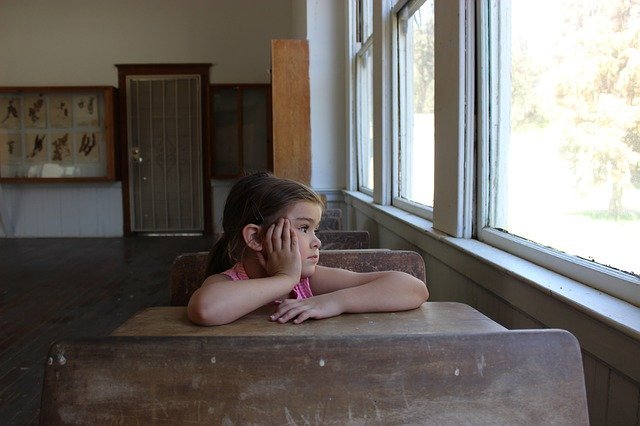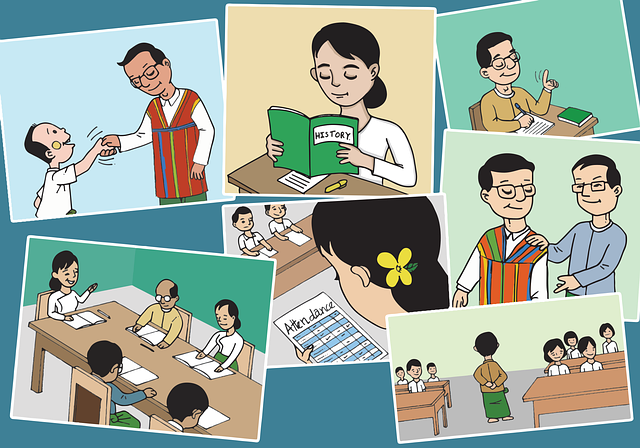
Hola comunidad de Steemit
Hoy quiero compartir con ustedes una técnica de investigación científica que utilizamos a nivel educativo para ahondar en situaciones específicas que a veces desde una mera observación no logramos precisarlas. Como docentes de aula en ocasiones nos encontramos con grupos de estudiantes un poco difíciles de sobrellevar motivados por las múltiples cargas emocionales debido a situaciones familiares que ellos no han sabido cómo afrontar ni manejar, lo que a veces se desencadenan en distorsiones en sus conductas dentro de las aulas de clases, trayendo esto como consecuencia obstáculos para el buen desarrollo de los procesos de enseñanza y aprendizaje.

Esta técnica a la que hago alusión es la observación participante y sus ventajas son bastante notables en la resolución de problemas estudiantiles dentro del aula, su importancia se encuentra en el hecho de que si queremos llegar a descubrir las causas de ciertas situaciones poco favorables o conductas inadecuadas esta técnica nos ayudará a descubrirlas y entenderlas de la mejor forma.
Es importante señalar que con una mera observación (cuantitativa) sólo podemos ver la conducta en sí, sin mayores detalles e interpretaciones y suponer las posibles causas o razones desde un punto de vista muy objetivo y poco personal. Ahora bien si nos ubicamos dentro del contexto, compartimos junto con ellos sus experiencias podemos recabar información de primera mano que nos lleve más directamente a la solución de la situación o conducta que queremos mejorar.

La observación sólo recopila datos, los codifica, todo desde afuera mientras que en la observación participante el investigador se adentra de manera directa en el contexto a estudiar, interactúa con los sujetos de investigación, comparte con ellos, va descubriendo poco a poco sus preocupaciones y sus expectativas. Si bien es cierto que quizás no hay un lapso de tiempo muy definido para llevarla a cabo, es una técnica que sin duda nos aportará mucha más información y de primera mano que nos va a orientar a una estrategia más eficaz para solucionar los problemas.
Ahora bien, quizás se preguntan cómo llevar un control o registro de lo que estamos observamos mientras participamos?

Pues bien, debemos llevar registros diarios y muy detallados de todo lo que acontece, vivimos y compartimos con los sujetos a investigar, se describe el entorno, a las personas, los sucesos o acontecimientos, se hacen interpretaciones, opiniones y reflexiones por parte del investigador participante. Asimismo, es importante tener muy en cuenta que no debemos intentar tener cada detalle grabado en nuestra memoria ya que al vivir tantas situaciones, imprevistos, emociones, entre otros, corremos el riesgo de omitir detalles importantes en igual forma confundir las situaciones. Cada detalle observado y vivido es primordial si lo que queremos es descubrir las causas y motivaciones de una situación particular dentro del aula y así mismo aportar la mejor estrategia de solución.
Me despido por ahora, nos estamos leyendo
Hello Steemit community
Today I want to share with you a scientific research technique that we use at an educational level to delve into specific situations that sometimes from a mere observation we are unable to specify them. As classroom teachers, sometimes we find groups of students that are a bit difficult to cope with, motivated by multiple emotional burdens due to family situations that they have not known how to face or handle, which sometimes are triggered in distortions in their behaviors within the classrooms, resulting in obstacles to the proper development of the teaching and learning processes.

This technique to which I refer is participant observation and its advantages are quite remarkable in solving student problems in the classroom, its importance lies in the fact that if we want to discover the causes of certain unfavorable situations or behaviors inadequate this technique will help us to discover and understand them in the best way.
It is important to note that with a mere (quantitative) observation we can only see the behavior itself, without further details and interpretations, and suppose the possible causes or reasons from a very objective and not very personal point of view. Now, if we place ourselves within the context, we share their experiences with them, we can collect first-hand information that leads us more directly to the solution of the situation or behavior that we want to improve.

Observation only collects data, encodes it, all from the outside, while in participant observation the researcher enters directly into the context to be studied, interacts with the research subjects, shares with them, gradually discovers their concerns and Your expectations. Although it is true that perhaps there is not a very defined period of time to carry it out, it is a technique that will undoubtedly provide us with much more information and first hand that will guide us to a more effective strategy to solve problems.
Now, perhaps you wonder how to keep track of what we are observing while we participate?

Well, we must keep daily and very detailed records of everything that happens, we live and share with the subjects to be investigated, the environment, people, events or events are described, interpretations, opinions and reflections are made by the researcher competitor. Likewise, it is important to bear in mind that we should not try to have every detail engraved in our memory since when experiencing so many situations, unforeseen events, emotions, among others, we run the risk of omitting important details in the same way confusing situations. Every detail observed and experienced is essential if what we want is to discover the causes and motivations of a particular situation in the classroom and also provide the best solution strategy.